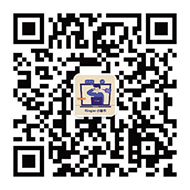The global aseptic packaging market is valued at USD59.8 billion in 2023 and is projected to grow at a CAGR of 9.5% during the forecast period 2023-2033. Market intelligence provider, Visiongain publishes the trends and opportunities in Aseptic Packaging Market Report 2023-2033: Forecasts by Packaging Type (Bottles, Cartons, Bags and Pouches, Vials, Pre-filled Syringes & Ampoules, Others), by Material Type (Plastic, Paper and Paperboard, Glass, Metal), by Application (Food, Beverages, Pharmaceuticals, Others) AND Regional and Leading National Market Analysis PLUS Analysis of Leading Companies AND COVID-19 Impact and Recovery Pattern Analysis.
Increase in demand for sterile pharmaceuticals
The aseptic packaging business has a sizable window of opportunity due to the growth in demand for sterile pharmaceutical items. Aseptic packaging solutions are becoming more and more necessary as pharmaceutical manufacturing, particularly for injectable medications, vaccines, and biologics, grows. In order to retain the sterility and integrity of these delicate medical items and ensure their safety and efficacy, aseptic packaging is essential.
Sterile pharmaceuticals are highly sensitive to contamination and require stringent packaging measures. Aseptic packaging provides an ideal solution by ensuring that the products are packaged in a sterile environment, preventing the introduction of any microorganisms or impurities. This preservation of product quality and extended shelf life is crucial for pharmaceutical companies to maintain the integrity and effectiveness of their products during transportation, storage, and use.
The pharmaceutical industry is subject to stringent regulatory standards and guidelines, particularly when it comes to the production and packaging of sterile drugs. Aseptic packaging techniques align with these requirements and help pharmaceutical companies meet the necessary regulatory standards. By utilising aseptic packaging, companies can demonstrate their commitment to maintaining the sterility and safety of their products, ensuring compliance with regulatory authorities.
Collectively, the market stands to gain a substantial opportunity through the utilisation of outsourcing and strategic alliances among providers of aseptic packaging.
F&B demand drives aseptic packaging market during the pandemic
The outbreak of the pandemic has brought about noticeable changes in consumer behaviour and an increased focus on hygiene and safety. As a result, there has been a surge in the demand for aseptic packaging solutions due to their various advantages, including contamination prevention, product quality maintenance, and reduced reliance on preservatives.
One of the primary impacts of COVID-19 on the aseptic packaging market is the heightened demand for packaged food and beverages. With the implementation of lockdowns and social distancing measures, consumers have increasingly relied on packaged goods for their daily necessities. Aseptic packaging ensures the safety and longevity of these products, making them a desirable choice for consumers.
Furthermore, the pandemic has caused disruptions in global supply chains, posing challenges in the production and distribution of food and beverages. Aseptic packaging has played a crucial role in addressing these challenges by preserving products without the need for refrigeration or additives. It enables the transportation of goods over long distances and minimises the risk of spoilage, allowing companies to meet the demand for essential commodities.
Current market drivers
Technological advancements to fuel industry growth
Innovations in packaging materials, equipment, and techniques have improved the efficiency and effectiveness of aseptic packaging processes. For instance, the development of advanced filling and sealing machines enables faster and more precise packaging, reducing the risk of contamination and increasing productivity. Additionally, the introduction of new packaging materials with enhanced barrier properties has bolstered product protection and preservation.
Moreover, advancements in sterilisation techniques have contributed to the market's growth. Technologies such as electron beam, hot water spray, and microwave-assisted thermal sterilisation have emerged as effective methods for sterilising packaging materials and equipment. These techniques ensure the integrity of the packaged products while guaranteeing their safety and quality.
For example, the advancement of filling and sealing machines has improved the efficiency and precision of aseptic packaging processes. Companies like Tetra Pak have introduced high-speed filling machines that can package thousands of products per hour, ensuring faster production while maintaining the sterility and quality of the packaged goods.
Another is the development of packaging materials with enhanced barrier properties. The use of multi-layered laminates and coatings provides excellent protection against oxygen, light, and moisture, which helps preserve the freshness and quality of the packaged products for an extended period.
Rising consumer demand for convenient and safe products
The aseptic packaging market has experienced significant growth recently, driven primarily by the increasing consumer preference for safe and convenient products. Aseptic packaging involves filling sterile items into sterile containers under aseptic conditions, ensuring product freshness and a longer shelf life. This packaging method involves sterilising the packaging material and the product separately, and then combining them in a sterile environment to prevent any contamination.
In the food and beverage industry, aseptic packaging has gained considerable popularity due to its ability to preserve the nutritional content, flavour, and overall quality of perishable goods without the need for refrigeration or the addition of preservatives. It allows manufacturers to offer a diverse range of ready-to-eat meals, juices, dairy products, and sauces that can be stored at room temperature for an extended period. Consumers appreciate the convenience and flexibility provided by aseptic packaging, as it enables them to enjoy nutritious meals and beverages on the go without compromising on taste or safety.
Market opportunities
Increase in demand for sustainable solutions
The aseptic packaging market is experiencing substantial growth and lucrative opportunities, driven primarily by the rising demand for sustainable packaging solutions. Aseptic packaging entails filling products into containers under sterile conditions, ensuring their integrity and extending shelf life without the need for refrigeration or preservatives.
There has been a significant global shift towards environmental sustainability, leading to a notable change in consumer preferences favouring eco-friendly packaging options. Traditional packaging methods often rely on materials such as plastics and aluminum, which have adverse effects on the environment. In contrast, aseptic packaging offers various sustainable advantages.
The increased demand for environmentally friendly solutions has specifically influenced the aseptic packaging market by driving the adoption of recyclable and biodegradable materials. Industry participants are actively exploring alternatives like plant-based and paper-based packaging materials. These substitutes, derived from renewable sources, significantly reduce carbon footprints and can be easily recycled or composted, aligning with the principles of a circular economy.
Expansion into emerging markets
Aseptic packaging allows manufacturers to reach untapped markets, especially in regions where the cold chain infrastructure is limited. By offering shelf-stable products with a longer shelf life, companies can expand their presence in emerging markets and cater to the rising demand for packaged food and beverages. Emerging markets may have a significant portion of the population that is underserved or has limited access to packaged food and beverages. Aseptic packaging companies can tap into this untapped potential by introducing their products and solutions to cater to the rising demand.
Aseptic packaging allows food and beverage products to have an extended shelf life without the need for preservatives or refrigeration. This is particularly beneficial in emerging markets where consumers often face challenges related to product availability, limited access to refrigeration, or unreliable power supply. Emerging markets often have a rapidly growing middle class with increasing disposable incomes. As consumer preferences shift towards packaged and processed food and beverages, there is a significant market growth potential for aseptic packaging companies to capture a share of this expanding market.

 iConnectHub
iConnectHub
 Login/Register
Login/Register Supplier Login
Supplier Login


























